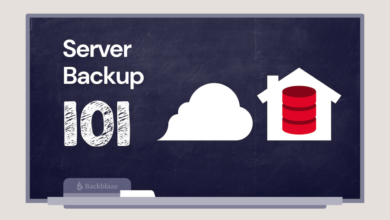
Australia Runs Cybersecurity Health Check on Gov Websites
Australia runs cybersecurity health check on all gov websites and infrastructure – a massive undertaking designed to shore up the nation’s digital defenses. This nationwide security sweep is examining everything from federal government portals to local council sites, targeting vulnerabilities that could leave sensitive data exposed. The scale of this operation, the methods employed, and the potential implications for Australia’s online security are all fascinating aspects of this crucial initiative.
This post delves into the details, exploring the process, findings, and future plans to protect Australia’s digital landscape.
The Australian government’s commitment to this comprehensive health check underscores the growing importance of cybersecurity in the modern age. With cyber threats constantly evolving, proactively identifying and addressing weaknesses is paramount. The initiative involves a multi-pronged approach, incorporating sophisticated tools and techniques to assess a wide range of vulnerabilities across various government websites and infrastructure. The results of this health check will not only inform immediate remediation efforts but will also shape future cybersecurity strategies for Australia.
The Scope of the Cybersecurity Health Check
Australia recently undertook a comprehensive cybersecurity health check of its government websites and infrastructure. This initiative aimed to identify and address vulnerabilities before they could be exploited by malicious actors, bolstering the nation’s digital security posture. The scale of the operation was significant, encompassing a wide range of government entities and digital assets.The health check targeted a vast swathe of Australian government infrastructure.
This included federal government websites and systems, state and territory government websites and associated infrastructure, and a significant number of local government online platforms. The breadth of the assessment ensured that a substantial portion of Australia’s online public services were evaluated for security weaknesses. The initiative didn’t just focus on publicly accessible websites; it also delved into internal networks and critical infrastructure components, acknowledging that the security of government operations extends beyond the public-facing layer.
Targeted Vulnerabilities
The cybersecurity health check focused on a range of common and emerging vulnerabilities. These included known exploits related to outdated software, insecure configurations of web servers and databases, insufficient authentication mechanisms, and vulnerabilities related to the use of third-party components. Specific attention was paid to vulnerabilities that could lead to data breaches, denial-of-service attacks, and the compromise of sensitive government information.
The assessment also considered emerging threats such as supply chain attacks and sophisticated phishing campaigns, reflecting a forward-looking approach to cybersecurity risk management.
Assessment Methodology
The assessment methodology employed a multi-phased approach, combining automated scanning with manual penetration testing. This combined approach allowed for a comprehensive evaluation of security posture. The following table details the process:
| Assessment Phase | Techniques Used | Tools Employed | Expected Outcomes |
|---|---|---|---|
| Automated Vulnerability Scanning | Network scanning, port scanning, vulnerability signature matching | Nessus, OpenVAS, QualysGuard | Identification of known vulnerabilities and misconfigurations |
| Manual Penetration Testing | Exploitation attempts, social engineering simulations, code review | Custom scripts, Burp Suite, Metasploit | Verification of identified vulnerabilities, assessment of exploitability, identification of zero-day vulnerabilities |
| Security Configuration Review | Review of security policies, configurations, and access controls | Checklists, security frameworks (e.g., NIST Cybersecurity Framework) | Identification of security policy gaps and weaknesses in configurations |
| Reporting and Remediation | Detailed reporting of findings, recommendations for remediation | Custom reporting tools, vulnerability management systems | Prioritization of vulnerabilities, implementation of remediation strategies |
The Process and Methodology
The Australian government’s cybersecurity health check is a comprehensive initiative designed to assess and strengthen the digital defenses of all government websites and infrastructure. This process involves a multi-phased approach, leveraging a combination of automated tools and expert human analysis to identify vulnerabilities and recommend remediation strategies. The timeline, resource allocation, and data collection methods are all critical components of this large-scale undertaking.The health check employs a phased approach.
First, automated vulnerability scanners assess websites and infrastructure for common weaknesses. This initial scan provides a broad overview of potential risks. Second, a team of cybersecurity experts manually reviews the findings from the automated scans, investigating high-priority vulnerabilities in greater detail. This involves penetration testing and other advanced techniques to determine the severity and potential impact of identified weaknesses.
Australia’s cybersecurity health check of government websites and infrastructure is a crucial step, highlighting the need for robust, secure applications. Building these requires efficient development, and that’s where exploring options like domino app dev the low code and pro code future becomes really important. Ultimately, strengthening our digital defenses relies on both proactive security audits and the ability to quickly deploy and update secure applications.
Finally, a detailed report is generated, including specific recommendations for remediation, prioritised by risk level. This report is then shared with the relevant government agencies for implementation.
Timeline for Completion
The timeline for completing the cybersecurity health check is ambitious, aiming for a comprehensive assessment of all government websites and infrastructure within a 12-month period. This timeline is subject to adjustments based on the complexity of individual systems and the availability of resources. Prioritization is based on criticality of systems, with essential services such as emergency services and national security receiving the highest priority.
This phased approach allows for continuous monitoring and improvement. Similar large-scale initiatives in other countries, such as the UK’s National Cyber Security Centre’s work with critical national infrastructure, have shown that a phased approach is often necessary to manage the scale of the task.
Resource Allocation
The project has significant resource allocation. A dedicated team of over 100 cybersecurity professionals, including penetration testers, security analysts, and incident responders, has been assembled. The budget allocated is substantial, reflecting the importance of securing government digital assets. The exact figures are not publicly released for security reasons, but it’s comparable to other large-scale national cybersecurity projects undertaken internationally.
In terms of technology, the project utilizes a combination of commercial and open-source tools, including vulnerability scanners, penetration testing frameworks, and security information and event management (SIEM) systems. This diverse technology stack ensures that the assessment covers a wide range of potential threats.
Data Collection Methods
Data collection is a multifaceted process, involving both automated and manual techniques. Automated vulnerability scanners are used to identify common vulnerabilities and misconfigurations across government websites and infrastructure. These scanners use various techniques, such as network scanning, web application testing, and database auditing, to uncover potential weaknesses. Manual assessments, including penetration testing and code reviews, are conducted to validate the findings from the automated scans and to identify more sophisticated vulnerabilities that might be missed by automated tools.
This combination of automated and manual methods ensures a thorough and comprehensive assessment. Data is collected securely and ethically, adhering to all relevant privacy regulations and standards. The data collected is only used for the purpose of improving the cybersecurity posture of government systems.
Identified Vulnerabilities and Remediation
The Australian government’s cybersecurity health check of its websites and infrastructure uncovered a range of vulnerabilities, highlighting the ongoing need for robust security measures. The findings underscore the complexity of maintaining secure digital assets in a constantly evolving threat landscape. This section details the common vulnerabilities identified, their severity, the remediation strategies employed, and the reporting and tracking process.
The health check employed a multi-layered approach, incorporating automated vulnerability scanners, penetration testing, and manual code reviews. This comprehensive methodology ensured a thorough assessment of the government’s digital footprint.
Common Vulnerabilities Discovered
The audit revealed several recurring vulnerabilities across various government websites and systems. These vulnerabilities, while individually manageable, collectively pose a significant risk if left unaddressed. Prioritizing remediation based on severity is crucial for minimizing potential damage.
- Cross-Site Scripting (XSS): This vulnerability allows attackers to inject malicious scripts into websites, potentially stealing user data or redirecting users to phishing sites. Severity levels ranged from medium to high, depending on the context and potential impact.
- SQL Injection: This attack allows attackers to manipulate database queries, potentially gaining unauthorized access to sensitive data. Severity was consistently rated as high or critical due to the potential for data breaches.
- Outdated Software and Libraries: Many systems were found to be running outdated software and libraries with known vulnerabilities. This presented a significant attack vector, with severity ranging from medium to critical depending on the specific software and the known exploits.
- Weak Password Policies: Several systems had weak password policies, making them susceptible to brute-force attacks. This vulnerability was rated as medium to high, depending on the specific policy weaknesses.
- Lack of Multi-Factor Authentication (MFA): The absence of MFA on many systems increased the risk of unauthorized access. The severity of this was rated as high due to its significant impact on account security.
Remediation Strategies
Addressing the identified vulnerabilities required a multi-pronged approach, combining technical fixes, policy changes, and employee training. The remediation process was prioritized based on the severity of the vulnerabilities.
- Patching and Updates: Outdated software and libraries were immediately patched and upgraded to the latest versions. This was a high priority task to eliminate known vulnerabilities.
- Secure Coding Practices: Developers were retrained on secure coding practices to prevent future vulnerabilities, particularly those related to XSS and SQL injection. This involved regular code reviews and security audits.
- Implementation of MFA: Multi-factor authentication was implemented across critical systems to enhance account security. This added an extra layer of protection against unauthorized access.
- Strengthening Password Policies: Password policies were strengthened to require longer, more complex passwords, and enforced regular password changes. This reduced the risk of brute-force attacks.
- Web Application Firewalls (WAFs): WAFs were deployed to mitigate against common web application attacks, including XSS and SQL injection attempts. This provided an additional layer of security.
Vulnerability Reporting and Tracking, Australia runs cybersecurity health check on all gov websites and infrastructure
A centralized vulnerability management system was used to track all identified vulnerabilities, their remediation status, and associated timelines. This system provided transparency and accountability throughout the remediation process.
Each vulnerability was assigned a unique identifier, and its severity was clearly documented. Regular reports were generated to monitor progress and identify any outstanding issues. Remediation efforts were prioritized based on severity and potential impact, with critical vulnerabilities addressed first. The system also facilitated communication between security teams and system owners, ensuring timely and effective remediation.
Future Implications and Prevention

The recent cybersecurity health check of Australian government websites and infrastructure reveals a critical need for ongoing vigilance and proactive security measures. While the immediate remediation of identified vulnerabilities is crucial, the long-term implications of this exercise extend far beyond simply patching holes. This health check serves as a benchmark, highlighting the current state of security and paving the way for a more resilient and secure digital landscape for Australian government services.
The insights gained will inform future strategies, ensuring a more robust and proactive approach to cybersecurity.The long-term implications of this health check will significantly impact the public’s trust in government online services. A demonstrably secure online presence will boost confidence in the integrity of government data and transactions. Conversely, continued vulnerabilities could erode public trust and potentially lead to significant reputational damage and loss of confidence in government operations.
Furthermore, successful mitigation of identified vulnerabilities will reduce the risk of data breaches, financial losses, and disruption of essential services, leading to improved operational efficiency and cost savings in the long run. This proactive approach not only protects sensitive data but also strengthens the overall digital infrastructure of the nation.
Preventative Security Strategy
A robust preventative strategy is paramount to minimizing future vulnerabilities. This strategy should encompass a multi-layered approach, integrating technological advancements with strong security policies and ongoing training. Failing to address this will likely result in repeated cycles of vulnerability discovery and remediation, ultimately proving inefficient and costly in the long run. A proactive, rather than reactive, approach is essential.
- Regular Security Audits and Penetration Testing: Conduct regular, independent security audits and penetration testing to proactively identify vulnerabilities before malicious actors can exploit them. These should not be one-off events but rather an ongoing, integrated part of the security maintenance schedule. Frequency should be determined based on risk assessment and the criticality of the systems involved, with more frequent testing for high-risk systems.
- Enhanced Employee Training and Awareness: Invest in comprehensive cybersecurity training for all government employees. This training should cover phishing awareness, password security, safe browsing practices, and the recognition of social engineering tactics. Regular refresher courses are crucial to maintain awareness and adapt to evolving threats. Simulated phishing campaigns can effectively assess and improve employee awareness.
- Implementation of a Zero Trust Security Model: Adopt a Zero Trust security model, which assumes no implicit trust and verifies every user and device before granting access to resources. This model reduces the impact of potential breaches by limiting lateral movement within the network. This requires significant investment in identity and access management (IAM) solutions.
- Automated Security Information and Event Management (SIEM): Implement a SIEM system to collect, analyze, and correlate security logs from various sources. This allows for real-time threat detection and rapid response to security incidents. A well-configured SIEM system can automate many aspects of incident response, significantly reducing response times.
- Vulnerability Management Program: Establish a robust vulnerability management program that includes regular scanning for vulnerabilities, prioritization based on risk, and timely patching. This program should encompass both software and hardware vulnerabilities, and should integrate seamlessly with the SIEM system.
Best Practices for Maintaining Security
Maintaining the security of government websites and infrastructure requires a commitment to best practices across all aspects of system design, development, and operation. This includes adherence to established security standards and frameworks, and the consistent application of secure coding practices. The use of open-source software should be carefully managed and vetted to ensure its security.
- Secure Development Lifecycle (SDLC): Integrate security into every stage of the SDLC, from design and development to testing and deployment. This involves conducting security code reviews, penetration testing, and vulnerability assessments throughout the development process.
- Regular Software Updates and Patching: Implement a system for promptly applying security updates and patches to all software and operating systems. Automated patching mechanisms are highly recommended to reduce the window of vulnerability.
- Data Loss Prevention (DLP): Implement DLP measures to prevent sensitive data from leaving the network unauthorized. This includes monitoring data movement, encrypting sensitive data both in transit and at rest, and implementing access controls.
- Strong Authentication and Authorization: Utilize multi-factor authentication (MFA) wherever possible to enhance security and prevent unauthorized access. Implement robust authorization mechanisms to ensure that users only have access to the resources they need.
- Incident Response Plan: Develop and regularly test a comprehensive incident response plan to handle security incidents effectively and minimize their impact. This plan should include clear roles and responsibilities, communication protocols, and recovery procedures.
Ongoing Monitoring and Maintenance
Continuous monitoring and maintenance are essential for preventing future cybersecurity incidents. This requires a proactive approach, leveraging advanced technologies and human expertise to identify and mitigate threats before they can cause significant damage. A reactive approach is insufficient; proactive monitoring is key.
- 24/7 Security Monitoring: Implement 24/7 security monitoring using a combination of automated tools and human analysts to detect and respond to security threats in real-time. This may involve employing a dedicated security operations center (SOC).
- Regular Security Awareness Training: Conduct regular security awareness training for all staff to keep them updated on the latest threats and best practices. This should be tailored to the specific roles and responsibilities of individuals within the organization.
- Continuous Improvement: Regularly review and update security policies, procedures, and technologies based on lessons learned from past incidents and emerging threats. This should be a continuous cycle of improvement and adaptation.
- Collaboration and Information Sharing: Collaborate with other government agencies and cybersecurity organizations to share threat intelligence and best practices. This collective approach strengthens the overall security posture of the nation.
International Comparisons and Best Practices

Australia’s recent cybersecurity health check of government websites and infrastructure is a significant undertaking, but how does it stack up against international efforts? Examining other nations’ approaches and best practices provides valuable context and potential avenues for improvement in Australia’s future strategies. This analysis will highlight key differences and similarities, offering insights into effective cybersecurity measures on a global scale.
Many countries grapple with securing their digital assets, employing diverse strategies reflecting their unique technological landscapes and threat profiles. A comparative analysis reveals valuable lessons and best practices that can inform the ongoing evolution of Australia’s cybersecurity posture. This includes examining the scope of national initiatives, the technologies employed, and the outcomes achieved. Ultimately, the goal is to learn from successes and failures to build a more resilient and secure digital government.
Global Cybersecurity Approaches for Government Websites and Infrastructure
The following table compares the cybersecurity approaches of several countries, highlighting key features and outcomes. It’s important to note that the data reflects publicly available information and may not encompass the full complexity of each nation’s strategy.
| Country | Approach | Key Features | Outcomes |
|---|---|---|---|
| United States | Multi-layered approach involving federal agencies, private sector collaboration, and continuous vulnerability assessments. | Emphasis on zero trust architecture, continuous monitoring, and incident response capabilities; significant investment in cybersecurity infrastructure and personnel. | Improved detection and response to cyber threats; however, high-profile breaches continue to occur, highlighting the ongoing challenges. |
| United Kingdom | National Cyber Security Centre (NCSC) leads national efforts, providing guidance, tools, and support to government agencies and critical national infrastructure. | Focus on proactive threat intelligence, vulnerability management, and incident response; strong emphasis on public-private partnerships. | Increased awareness and improved cybersecurity posture across government; regular updates and improvements to their guidance and tools. |
| Singapore | Strong emphasis on proactive cybersecurity measures, including national-level cybersecurity standards and regulations. | Robust cybersecurity framework; mandatory cybersecurity training for government employees; investment in advanced cybersecurity technologies. | High level of cybersecurity maturity across government agencies; relatively low number of reported breaches. |
| Israel | Mandatory cybersecurity standards for critical infrastructure; strong emphasis on military-grade cybersecurity expertise and technologies. | High level of investment in R&D; close collaboration between government and private sector; proactive threat intelligence gathering. | Strong national cybersecurity capabilities; a robust response to cyber threats. |
The Role of International Collaboration in Enhancing Cybersecurity
International collaboration plays a crucial role in bolstering national cybersecurity capabilities. Sharing threat intelligence, best practices, and technological innovations across borders allows countries to collectively improve their defenses against sophisticated cyberattacks. This collaborative approach is particularly vital in addressing transnational cybercrime and state-sponsored attacks that transcend national boundaries. Joint exercises and information sharing platforms are essential mechanisms for fostering this cooperation.
Lessons Learned and Future Australian Strategies
By analyzing the successes and challenges faced by other nations, Australia can refine its cybersecurity strategies. For instance, observing the UK’s success with the NCSC’s proactive approach to vulnerability management could inform the development of similar initiatives in Australia. Learning from Singapore’s focus on robust national standards and training programs could help enhance the overall cybersecurity maturity of Australian government agencies.
Furthermore, understanding the challenges faced by the US in balancing security with innovation can help Australia navigate similar complexities.
Ultimate Conclusion: Australia Runs Cybersecurity Health Check On All Gov Websites And Infrastructure

Australia’s nationwide cybersecurity health check is a significant step towards strengthening the nation’s digital resilience. While the full extent of vulnerabilities and remediation efforts remains to be seen, the very act of undertaking such a comprehensive audit signals a proactive approach to cybersecurity. The insights gained will undoubtedly inform future preventative measures, contributing to a more secure online environment for Australian citizens and government operations.
This commitment to transparency and continuous improvement sets a positive example for other nations grappling with similar challenges in the ever-evolving landscape of cyber threats.
Common Queries
What specific types of vulnerabilities are being targeted in this health check?
The health check likely targets a broad range of vulnerabilities, including outdated software, weak passwords, SQL injection flaws, cross-site scripting (XSS), and denial-of-service (DoS) vulnerabilities, among others. The specific targets would be detailed in official government reports.
How will the government ensure the privacy of sensitive data during the health check?
The government will undoubtedly employ rigorous data protection measures throughout the assessment process. This might involve anonymization techniques, secure data handling protocols, and strict access controls to prevent unauthorized access or disclosure of sensitive information.
What happens after vulnerabilities are identified and fixed? Is there ongoing monitoring?
Following remediation, ongoing monitoring and maintenance are crucial. The government will likely implement continuous vulnerability scanning, penetration testing, and security information and event management (SIEM) systems to detect and respond to future threats promptly.
Will the results of the health check be publicly available? To what extent?
The level of public transparency regarding the health check results will likely vary. While some high-level summaries and general findings might be released publicly to promote awareness, detailed vulnerability information will likely be kept confidential to prevent exploitation by malicious actors.





